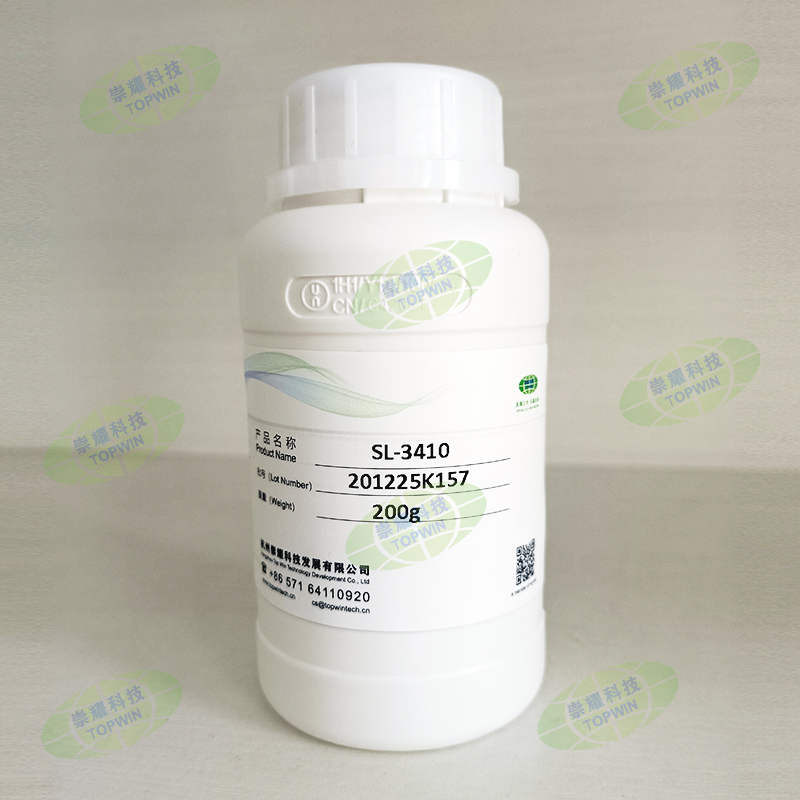Many times, we mix wetting agents and
leveling agents together. In fact, wetting agents and leveling agents are two different additives, but in many cases, some leveling agents (especially silicone leveling agents) have Good wetting effect, so the two are often mentioned together. Ink formulation, UV/EB, an auxiliary agent should be used as a wetting agent. The ability to reduce surface tension is the only indicator that determines its wetting ability, followed by compatibility and other factors. An auxiliary agent can reduce surface tension. Stronger, the stronger the wetting ability. Our commonly used oil repellent like 47V500 is one of the most common wetting agents, which can reduce the surface tension to about 22, which is much lower than that of common resins and resins. The surface tension of additives, such as Deqian's 435 can reduce the surface tension to between 20-21, and stronger wetting agents such as Tilo-235 can reduce the surface tension to below 19. According to the basic principle of paint film leveling, the final power of leveling comes from surface tension. Although a too low surface tension can provide excellent wetting ability, it sometimes has an adverse effect on leveling. Usually a wetting agent is used if the surface If the tension is lower than 22, it will have an adverse effect on leveling. In other words, a good wetting agent is not necessarily a good leveling agent in many cases.
Generally, due to the lower surface tension of silicone additives, compared with acrylic leveling agents, silicone leveling agents have lower surface tension and stronger wetting ability. Fluorine-modified acrylate flow The surface tension of the leveling agent can vary within a large range (from about 30 to less than 20) according to the level of fluorine content. That is to say, it cannot be said that as long as the fluorine-containing auxiliary agent must be very wet For example, when the fluorine content is very low (<2%", its wetting ability is only slightly stronger than the usual non-fluorine-free acrylic leveling agent. The representative product is EFKA-3777. When the fluorine content is increased ( (Approximately 10%) later, its wetting agent ability is close to the level of silicone additives, the representative product is EFKA-3600. When the fluorine content is further increased, its wetting ability will be further improved, which can exceed the level of normal silicone leveling agents. Due to the high cost of products with high fluorine content, related products are currently only used for some special purposes, such as FC-4430. For silicone additives, especially modified silicone oil additives, the wetting ability varies greatly with the structure. The most important parameters that affect the ability of the wetting agent are the silicon content and the substitution group. Type, the usual polyether modified dimethylsiloxane additives, as the silicon content increases, the ability of the wetting agent will increase; and when part of the methyl group in the dimethylsiloxane is replaced by a long-chain alkyl group Or after the aromatic group is substituted, the surface tension will be further increased, that is, the wetting ability will be further weakened.
The principle of action of
leveling agents is different. Generally speaking, the function of leveling agents is to spontaneously migrate to the surface of the paint film after being added to the coating system, providing uniform surface tension and maintaining surface tension throughout the paint. During the film drying process (including the two major processes of solvent volatilization and resin crosslinking), no major changes occur. The quality of a leveling agent depends on its ability to provide uniform surface tension, and has no direct relationship with the level of surface tension. According to the principle of the lowest energy in physics, only the process of reducing the energy of the system is spontaneous. Therefore, if an additive is to migrate to the surface spontaneously in the system, it must be able to reduce the surface energy of the system, that is, it must be able to reduce the surface energy of the system. The ability of the surface tension of the system. From this point of view, various leveling agents have a certain ability to reduce the surface tension of the system, that is, have a certain wetting ability.
The conclusion drawn from the combination of water-based adhesive formulations and water-based resins is that special wetting agents may usually have a certain negative effect on leveling, while leveling agents usually have wetting agent capabilities. The chemical structure is related. Generally, the wetting agent of silicone leveling agent is stronger, followed by fluorine-modified acrylate, and finally the usual acrylate leveling agent.
 Top Win
Top Win is one of the leading & professional manufacturers with more than 20 years' experience, have domestic top-level engineers in silicone surfactant industry. We specialized in producing all kinds of SILICONE BASED new materials and specialized in research, production, sales and marketing in silicone-based performance materials. Provide good OEM&ODM service.Our products are mainly used in
polyurethane foam,
Agriculture,Coatings and Inks, Leather & Textiles, Pulp and Paper, Cosmetic industry, etc.
